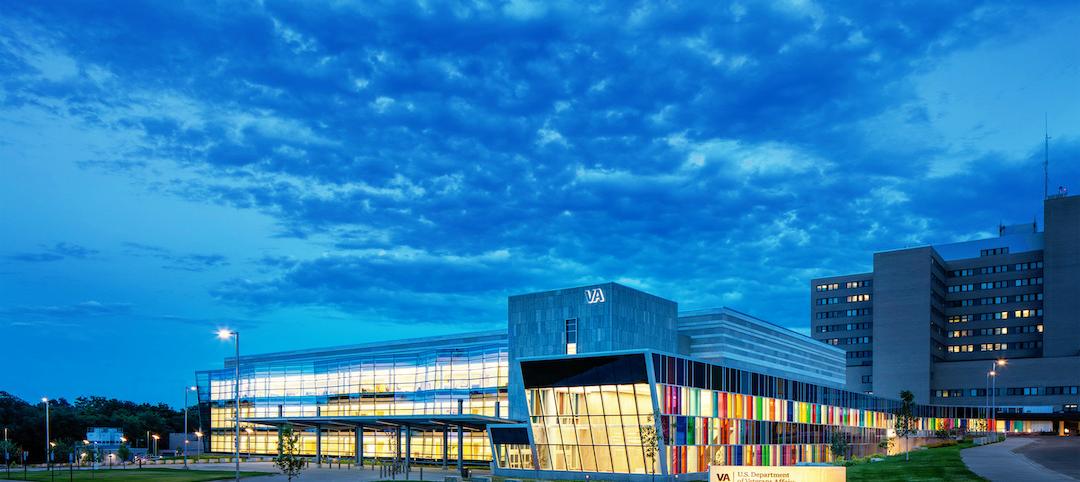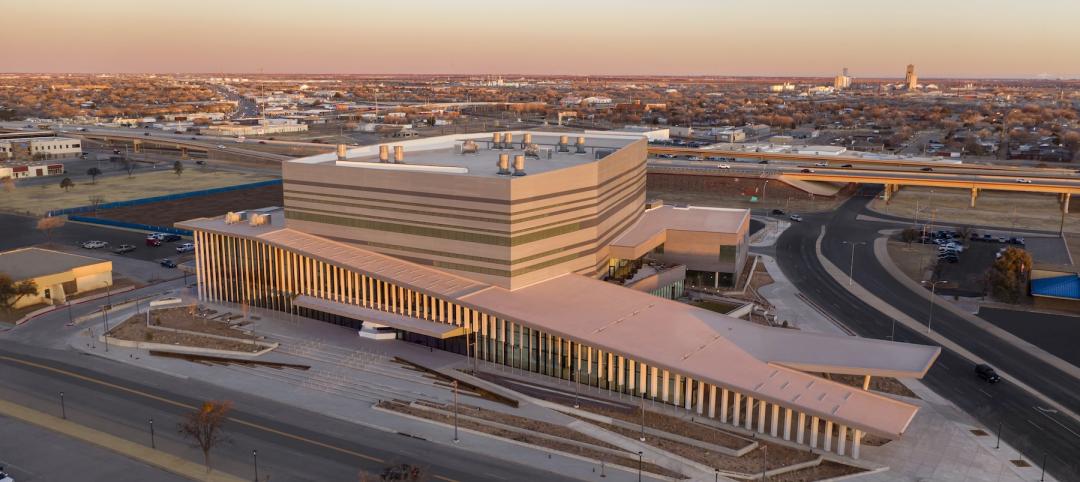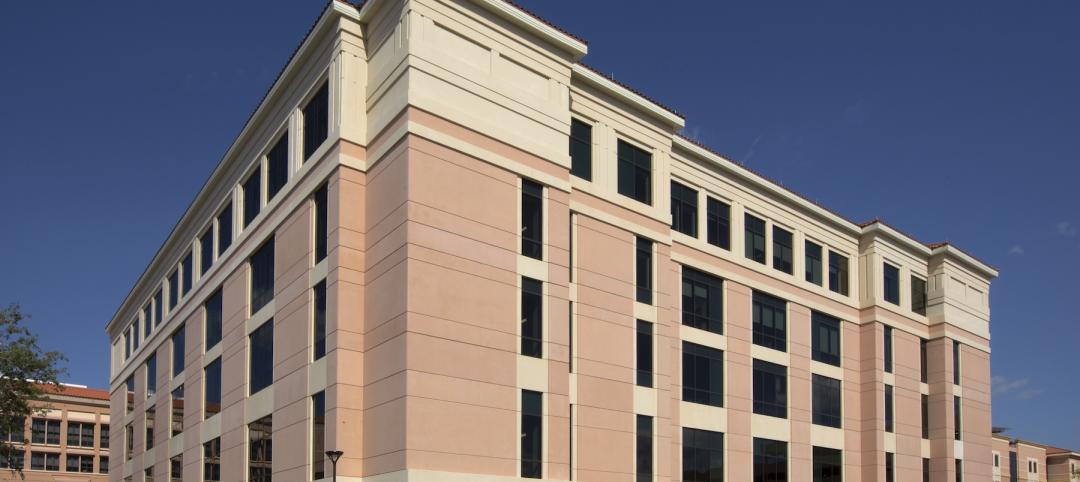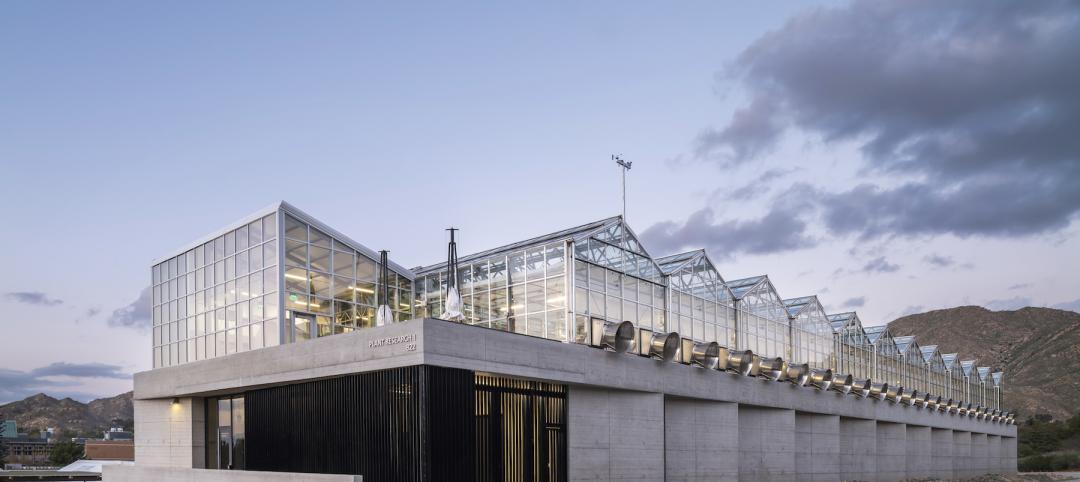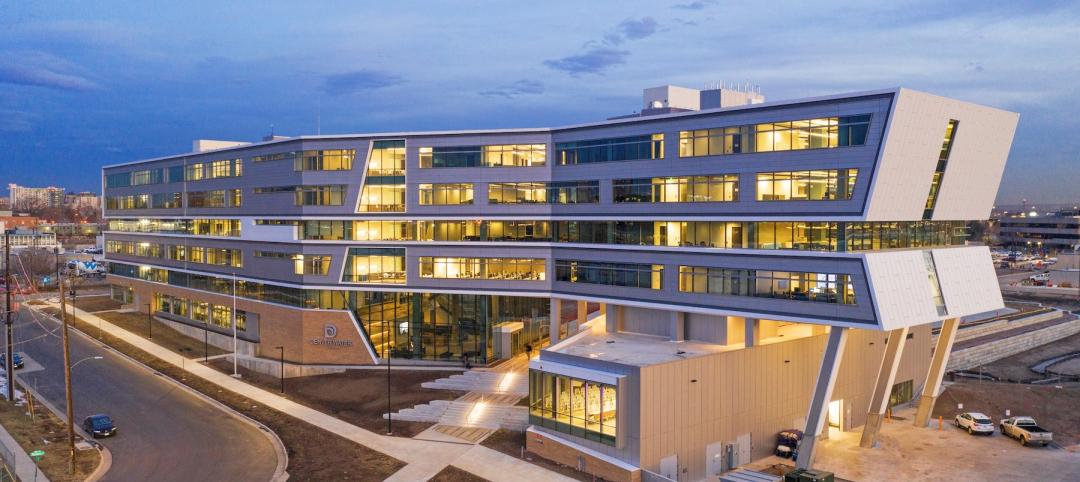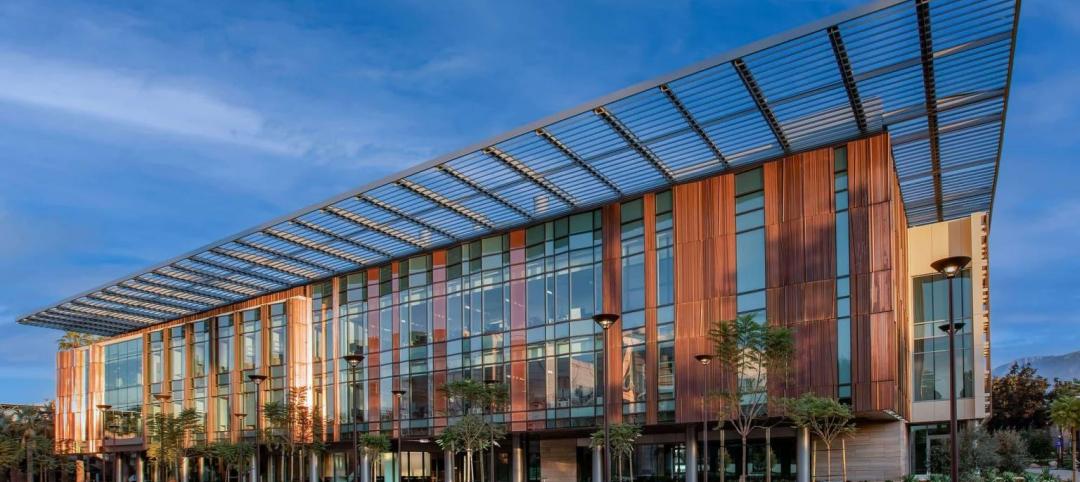The state-funded New York City College of Technology, known as City Tech, anchors a corner of Downtown Brooklyn’s burgeoning Tech Triangle. This new academic building creates a new campus gateway along a major thoroughfare that leads to the Brooklyn and Manhattan bridges.
The eight-story complex is the new home of City Tech’s clinical healthcare and sciences program, a 1,000-seat theater, an 800-seat gym, and a wellness center. As an epicenter of STEM education at CUNY, the building’s practice labs and smart classrooms serve programs in Restorative Dentistry, Dental Hygiene, Radiologic Technology and Medical Imaging, Nursing, Health Services Administration, Human Services, Biological Sciences, and Chemistry.
The project’s location gave the College opportunity to respond both to the growth in industry and technological advances in its disciplines, and the College’s increasing need for state-of-the-art instructional facilities to support its academic programs and Tech Triangle partnerships within one highly visible, prominent building.
The College desperately needed instructional, technologically sophisticated spaces that include academic classrooms, specialized labs, dental hygiene and vision care clinics, conference and seminar rooms, faculty offices, student life and recreation areas, and support spaces.
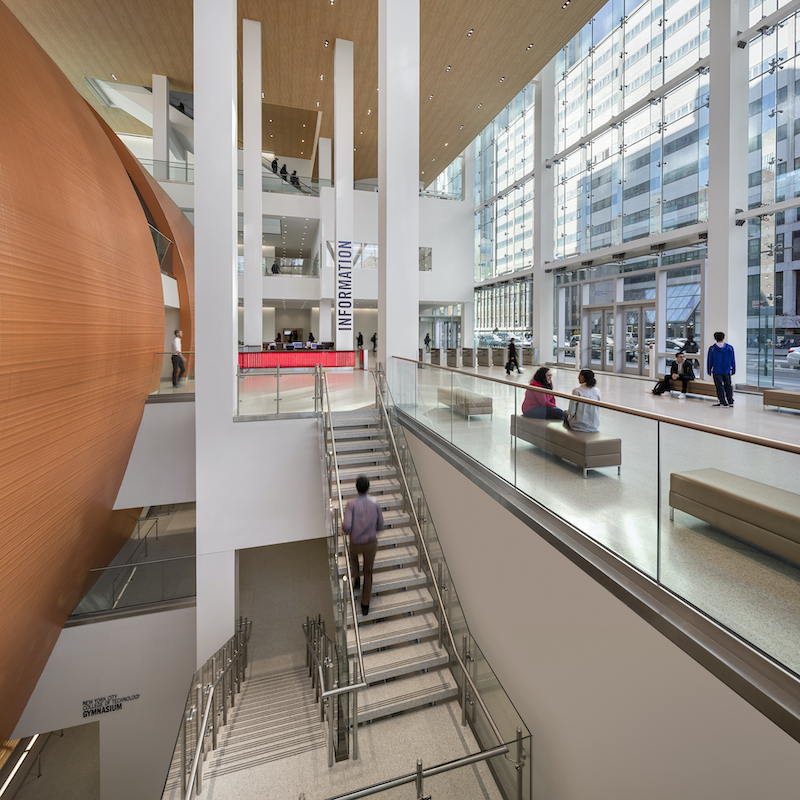 A soaring atrium connects students and community. Its curved structure is prominently visible from the street level down to the gym below grade.
A soaring atrium connects students and community. Its curved structure is prominently visible from the street level down to the gym below grade.
The building’s connection to its surrounding environment is a critical element of its design and siting. Its transparent façade, for example, “celebrates the intersection of academics, employment access, and community” for an institution whose student population is drawn from 150 countries.
The building “is a path to economic mobility,” writes Perkins Eastman, the project’s Architect. Transparency and design decisions create linkages that reinforce the institution’s mission, history, and goals as a senior technical college within the CUNY system.
In the early stages, the design team met with each of the user groups to determine the user’s specific departmental, programmatic, and clinical needs. The interior planning is organized vertically and horizontally to distribute public, clinical functions, and shared classrooms. The building’s internal academic functions are on display to the community, and its occupants are constantly connected back to the building’s urban context.
Scale was important to this project: for example, the design team brought on an arborist to help protect an array of trees on site during construction. Architectural features are meant to provide a sense of scale appropriate to pedestrians, and to create a dynamic institutional presence.
The multidimensional façade reduces the bulk of the building that spans the length of a city block. Its light-diffusing, insulated channel glass creates a beacon of light in the evening. The channel glass profile has a nanogel insulation inside the inner and outer lite to attenuate noise and mitigate sound transmission. The insulation improves the energy performance of the system.
A low-e coating minimizes the amount of ultraviolet and infrared light through the glass without compromising the amount of visible light.
A soaring “living room” atrium, at the building’s corner, connects students and community, and mirrors urban circulation patterns. From the main lobby, the curved structure is visible from the street level down to the below-grade gymnasium. Heavily populated spaces are located lower in the building, with lighter-use clinical and office environments on the upper floors. Student collaboration spaces and informal lounges were designed to encourage interaction, discovery, and flexibility. The building’s amenities complement these spaces.
A pre-function space for the Theater overlooks the atrium. The Theater is an active rental space that establishes City Tech as a community destination. The Theater sits above a basketball court, and that design required close collaboration and early planning to manage the front-of-house and back-of-house circulation, accessibility, infrastructure, and the integration of building systems.
The theater’s stage floor was designed with a series of platforms that allows faculty to install stage machinery to meet the needs of the theater automation class syllabus. Major parts of the stage floor can be removed, and void spaces below can accommodate mechanics. Modular platforms extend to the front of the orchestra where seats can be removed to create a large forestage extension or open floor space.
The stage lighting control system shares zone control with the lighted lantern of the building’s façade. Integrated design coordination was required between the two systems to allow the façade lighting to r un from the astronomical clock in the building management system and to be overridden by the stage lighting system. This prevents unwanted light from spilling into the auditorium during performances.
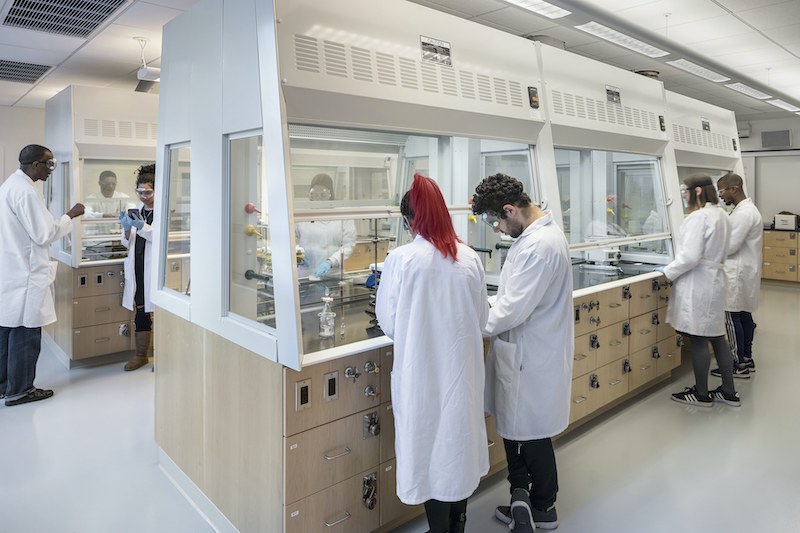 Practice labs and smart classrooms, like this one for organic chemistry, serve several medical programs as well as biological sciences.
Practice labs and smart classrooms, like this one for organic chemistry, serve several medical programs as well as biological sciences.
This project achieved LEED NC Gold certification. Its high-performance glazing lets in natural daylight that reduces energy consumption and abets cognition for users of quiet study areas that incorporate biophilic design. Achieving LEED Gold was a collaborative effort between the Building Team and the College.
Thirty-one percent of the building materials used on this project had recycled content. As part of the LEED Innovation credits, the College provides a course highlighting global climate change resulting from current waste, water and energy practices. The course includes basic principles of green design, including an analysis of the building itself.
New York State Energy research and Development Authority awarded funds for a new power plant that heats and chills the building. And in 2019 the Brooklyn Chamber of Commerce recognized the building for its sustainability.
MEP innovations were introduced into this project, which presented challenges to fit the building services within the physical envelope. 3D modelling analysis and early systems design integration helped achieve strategic reductions to maximize building performance.
The design team specified redundancies in systems such as the EPA Tier 4 generator plant—which is over and above the EPA minimum requirement of Tier 2—that reduces noxious fumes in the exhaust. Instead of code-minimum TP-1 transformers, the project uses high efficiency motors and CSL-3 transformers.
Submitting firm and Architect: Perkins Eastman Owner/developer: City University of New York, New York City College of Technology
Structural Engineer: WSP
MEP Engineer: Jaros Baum & Bolles Consulting Engineers
CM: Sciame Construction
Academic space programming: Scott Blackwell Page
Civil/geotechnical: Langan
Vertical transportation: Van Duesen & Associates
Façade consultants: WSP Building Enclosure, ALT Cladding Limited
Façade maintenance: Entek Engineering
Landscape designer: Balmori Associates
Landscape architect: HM White
Lighting consultant: Cline Bettridge Bernstein Lighting Design
Theater consultant: Theater Projects
Theater audiovisual: Acoustic Distinctions
Building audiovisual: Cerami & Associates
Acoustics/IT: Shen Milson & Wilke
Security: Kroll
Code and expediter: Conversano Associates
Code and fire/smoke modeling: Code Consultants
Code estimating: Ellana Construction Consultant
Size: 365,000 sf
Construction time: October 2013 to August 2019
Cost: $410 million
Delivery method: Design-Bid-Build
Photo credit Andrew Rugge/Perkins Eastman
Related Stories
| Aug 29, 2022
Montana becomes first U.S. state to approve 3D printing in construction
Montana is the first U.S. state to give broad regulatory approval for 3D printing in building construction.
Architects | Apr 22, 2022
Top 10 green building projects for 2022
The American Institute of Architects' Committee on the Environment (COTE) has announced its COTE Top Ten Awards for significant achievements in advancing climate action.
Concrete Technology | Apr 19, 2022
SGH’s Applied Science & Research Center achieves ISO 17025 accreditation for concrete testing procedures
Simpson Gumpertz & Heger’s (SGH) Applied Science & Research Center recently received ISO/IEC17025 accreditation from the American Association for Laboratory Accreditation (A2LA) for several concrete testing methods.
2021 Building Team Awards | Jan 14, 2022
First public-private partnership project in Veterans Administration history saves $34 million in costs
LEO A DALY and McCarthy Building Companies head the project team for the Omaha VA Ambulatory Care Center in BD+C’s 2021 Building Team Awards.
Building Team Awards | Dec 8, 2021
A performing arts center celebrates a legendary rocker and his birthplace
Buddy Holly Hall in Texas receives BD+C’s Silver Building Team Award.
Building Team Awards | Dec 7, 2021
A rapid response to a health emergency
Baptist Hospital of Miami’s 233-bed Hope Tower receives BD+C’s Bronze Building Team Award
Building Team Awards | Dec 3, 2021
Putting science on display, thanks to a design-build approach
UC Riverside’s Plant Growth Environments Facility receives BD+C’s Bronze Building Team Award.
Building Team Awards | Dec 2, 2021
An academic ‘precinct’ brings arts and sciences together
Wofford College’s Chandler Center for Environmental Studies receives BD+C’s Silver Building Team Award.
Building Team Awards | Dec 1, 2021
Denver sets the bar for water reclamation and reuse
A new administration building for the city’s water utility company scores Platinum in BD+C’s 2021 Building Team Awards.
2021 Building Team Awards | Nov 17, 2021
Caltech's new neuroscience building unites scientists, engineers to master the human brain
The Tianqiao and Chrissy Chen Institute for Neuroscience at the California Institute of Technology in Pasadena wins a Gold Award in BD+C's 2021 Building Team Awards.






